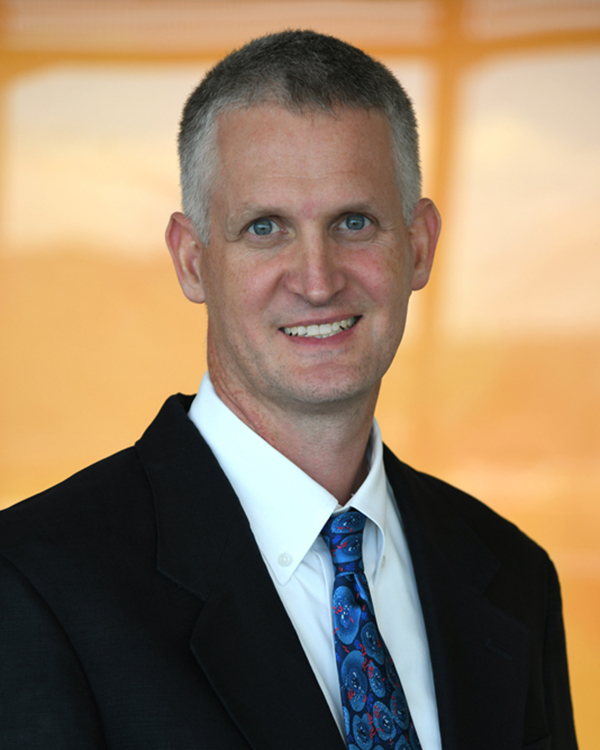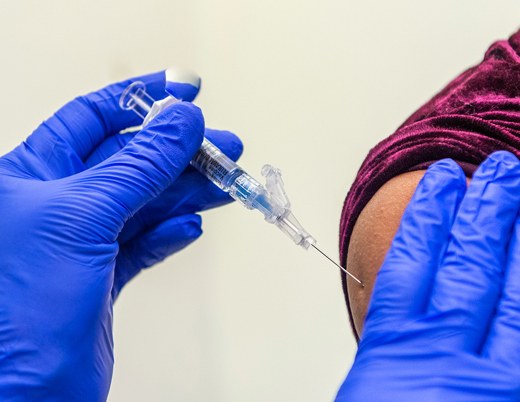How quickly could the hospital stand up a process to test for COVID-19?
As the novel coronavirus began to rapidly spread in early 2020, the team in the Children’s Hospital Colorado Clinical Microbiology Laboratory knew it was likely only a matter time before it became a pandemic. The pressure was on to quickly bring an assay online, and there were many barriers that took (and continue to take) the lab an immense amount of work to overcome. Despite everything, it was the first clinical lab in Colorado to stand up testing and one of the first in the nation.
Evaluating the options
Co-led by scientific director Sarah Jung, PhD, and medical director Samuel Dominguez, MD, PhD, the Children’s Colorado Clinical Microbiology Lab is a CLIA-certified, high complexity lab. In fact, as a clinical reference laboratory that provides extremely robust testing services both in-house and to external clients, it employs about 35 microbiologists.
“Everyone on our team had been watching the spread of the virus closely since late 2019,” says Dr. Dominguez. “In early January 2020, we went to hospital leadership and expressed how we needed to start thinking about what our response to a pandemic was going to be and how we could prepare, including what it would take to bring an assay online.”
Then, on January 20, 2020, Washington State reported the U.S.’s first confirmed case of COVID-19. That accelerated an already unprecedented preparation timeline.
The Microbiology Lab could try to build an assay from scratch — what’s known as a laboratory developed test, or LDT. Historically, though, it takes months to progress through necessary government approvals. Labs have to prove the test meets appropriate standards for sensitivity, specificity and limits of detection. Alternatively, the lab could try to use the assay already in development by the Centers for Disease Control and Prevention, or CDC. But at the time, it was only available for use by state public health labs.
Those two options weren’t even really options, though, because there were FDA restrictions in place barring clinical microbiology labs in the U.S. from performing any kind of testing related to SARS-CoV-2.
“It really left us in a bind,” says Dr. Dominguez. “So we went back to hospital leadership and asked for guidance on how to proceed.”
Hospital leadership connected the lab with the Children’s Colorado legal and government affairs teams to find a way to fast track the process.
Taking action
The government affairs team lobbied the governor of Colorado and members of congress to speak with the FDA about lifting regulatory barriers. As it turned out, other labs across the country were doing the same in their respective states.
Mounting pressure led the FDA to issue an Emergency Use Authorization on February 29, 2020, that allowed high-complexity, CLIA-certified labs to use the CDC assay, provided those labs had particular reagents, extraction kits, probes and enzymes to run the assay. That was another roadblock.
“They finally gave the thumbs up to clinical labs,” says Dr. Jung, “but we didn’t have any of those supplies on hand. And because every lab was ordering the same stuff at the same time, supplies were extremely difficult to get.”
But the lab had plenty of the reagents it typically uses for other subspecialized assays. So Dr. Jung, along with other clinical microbiology directors, worked with the FDA to convince them that other extraction agents were equivalent and could be used for clinical testing of the novel coronavirus in hospitals.
That determination paid off and on March 16, the Children’s Colorado Microbiology Lab was the first clinical lab in Colorado to have an assay up and running. Not only could the lab run samples from team members and patients in-house, it began to offer the service for community hospitals around the region — including some from Wyoming and Montana.
Preserving turnaround time
From the outset, the lab has maintained a 24-hour turnaround time for samples. “The health department’s initial turnaround time was one to three days, but they got backlogged really quickly and that turned into five to seven days,” says Dr. Dominguez. “In the clinical realm, that timeline isn’t useful because we’re making decisions in real time about patient placements and use of protective equipment.”
Waiting days for results would spend resources. A perpetually fast turnaround time was crucial, so the lab built efficiencies into its process.
“It’s about how many runs you can do in a day,” he says. “We had to repurpose some instruments. We had to rethink our workflow in the lab. We had to retrain people and reorganize shifts, even ask part-time people to come in. It was a new way of thinking so we could run the assay multiple times a day and get results out as quickly as we possibly could.”
Adding additional assays
Diversifying the platform portfolio would also be key. In other words, says Dr. Jung, the lab needed to acquire additional assays so it could run more samples and keep operation steady if it ran into a supply chain issue with one of the platforms.
So Dr. Jung and other clinical microbiology directors were on multiple calls with the FDA, imploring them to approve more tests under the Emergency Use Authorization.
On March 26, the lab brought a second platform online. It’s smaller, running about eight samples at once. But it has a quicker turnaround time, so it can run 24 hours a day.
On April 7, the lab added a third platform. It’s an Abbott high-throughput system, running about 94 samples at a time. But it has a longer turnaround time, roughly six hours from start to finish.
“That one is really useful for the samples we’re getting from other hospitals,” says Dr. Dominguez. “We can batch those and run them all once and do a couple of runs a day if we need to.”
A week later, the lab added a fourth platform. And now, it has five, including two Abbott high-throughput platforms.
Coronavirus testing capacity and its impact on care
As testing capacity increased, it helped the hospital enhance patient workflow so providers could continue to isolate and cohort patients and then quickly move those patients out of isolation when appropriate.
There were ultimately three phases of testing, each linked to when the assays were brought online.
Phase 1
Launch of the CDC assay was the start of Phase 1. All patients admitted to the hospital with respiratory symptoms or a fever received a respiratory pathogen panel, or RPP. If that was negative, the patient was reflexed to the SARS-CoV-2 test. While pending, that patient was a person under investigation and was cohorted on the hospital’s 9th floor.
“While the number of patients coming in was still relatively low, that strategy helped us quickly rule out or isolate,” says Dr. Dominguez, “which meant we could reserve full PPE — gowns, masks, face shields — for those patients who were flexed.”
As more patients came in that fit the criteria, though, they needed to morph the strategy.
Phase 2
In Phase 2, they started testing everyone who had respiratory symptoms, regardless of RPP results, because coinfection was an increasing concern.
“That raised the number of tests, but as we had more assays available, we could maintain our turnaround time and still efficiently manage the flow of patients in and out of the hospital. We kept them off that special floor and could get them out of those special isolations sooner, which further decreased our use of PPE.”
Phase 3
On April 9, two days after they launched the third assay, Phase 3 went into effect. Every single patient who is admitted to the hospital, even if they don’t have respiratory symptoms, receives the SARS-CoV-2 test. They also now screen patients who are set to have procedures or who are undergoing anesthesia. That way, providers and their teams can know if those patients are positive and can don the appropriate PPE.
Ongoing process enhancements
Drs. Jung, Dominguez and team continue to make adjustments to processes as necessary to limit the spread of infection and ensure the safety of team members, patients and the broader community.
For example, the lab no longer tests healthcare workers in the hospital. Instead, it’s fashioned two drive-thru testing sites, with plans in place to add another two. Perioperative and immunocompromised outpatients use those sites, as well.
There was also a critical shortage of the typical flocked swabs — one of the main ways to collect a specimen. So the lab got creative.
“With children, we often do nasopharyngeal washes, which is where you squirt some saline into the nose and then collect it as the specimen,” he says. “You don’t need swabs for those because it’s a different procedure, and you achieve the same results. It’s been a great workaround for some patients.”
The ability to be proactive instead of reactive has made the entire process easier, he says.
“The idea of ‘What we do today prepares us for tomorrow’ has really carried us through. None of this would have been possible without the incredible work of our government affairs team, the strong support we’ve received from the very top teams at Children’s Colorado, and the knowledge and early input of everyone on our microbiology team, all of whom continue to work tirelessly day in and day out. With no real end in sight, we’re grateful to have accomplished so much in such a short amount of time.”
Pathology: Studying sero-epidemiology
In addition to the Clinical Microbiology Lab and its work related to the management of specimen testing, the pathology lab at Children’s Colorado was the first in Colorado to begin collecting convalescent plasma from recovered COVID-19 patients and manufacturing it for transfusion under FDA emergency IND protocol. Convalescent plasma contains antibodies to SARS-CoV-2 that, when transfused into a patient with COVID-19, are believed to help them recover by boosting their immune system. But for reasons unknown, some recently recovered patients don’t seroconvert — meaning they don’t develop detectable antibodies. To avoid unnecessarily collecting plasma from donors, the transfusion medicine team now performs antibody testing prior to collection.
Featured Researchers

Samuel Dominguez, MD, PhD
Pediatric infectious disease specialist
Pediatric Infectious Disease Program
Children's Hospital Colorado
Professor
Pediatrics-Infectious Diseases
University of Colorado School of Medicine
Sarah Jung, PhD
Scientific director
Clinical Microbiology Lab
Children's Hospital Colorado





 720-777-0123
720-777-0123










